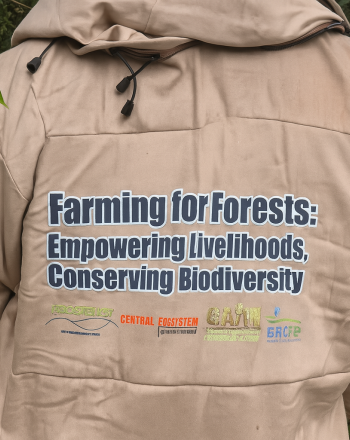
Supporting Farmers' Livelihoods in Ghana to Reinforce Biodiversity Conservation Practices
Resourcetrust Network
RTN project communication tagline on bee suite of a beneficiary smallholder.
© Resourcetrust Network
Previously Invested and currently investing
CEPF's current investment in the Guinean Forests of West Africa Biodiversity Hotspot follows two previous investments between 2001 and 2022, during which CEPF provided a combined total of $18.3 million in support of conservation projects across the region. To continue those efforts, CEPF is further investing in the biodiversity hotspot over a 5-year period, building on lessons learned from the previous phase.
CEPF will continue to focus on conserving priority terrestrial, freshwater and coastal ecosystems and remains committed to working with civil society organizations (CSOs) to become stronger and more resilient. We continue to recognize their role in connecting communities, governments, and other partners to deliver much needed positive biodiversity outcomes. With the new phase, we will provide grants to these CSOs to advance the protection and conservation of priority sites and species, while supporting capacity building and organizational development initiatives.
The Guinean Forests of West Africa Hotspot encompasses all of the lowland forests of political West Africa, stretching from Guinea and Sierra Leone eastward to the Sanaga River in Cameroon. This includes the countries of Liberia, Côte d'Ivoire, Ghana, Togo, Benin and Nigeria, which maintain remnant fragments of the forests. The hotspot also includes four islands in the Gulf of Guinea: Bioko and Annobon, which are both part of Equatorial Guinea, and São Tomé and Príncipe, which together form an independent nation.
At least 1084 species of plants and animals found in the hotspot are globally threatened, and this number is likely to increase as more species are assessed. The region is one of the top global priorities for primate conservation due to both high levels of endemism and threat.
In addition to their importance for biodiversity, the hotspot's forests contribute to mediating climate change at a global scale. They also provide the hotspot countries’ combined population of 368 million with timber and other building materials, fuel for cooking, food and medicine.
Or use Google Translate to translate the English site to your language:
Powered by Translate